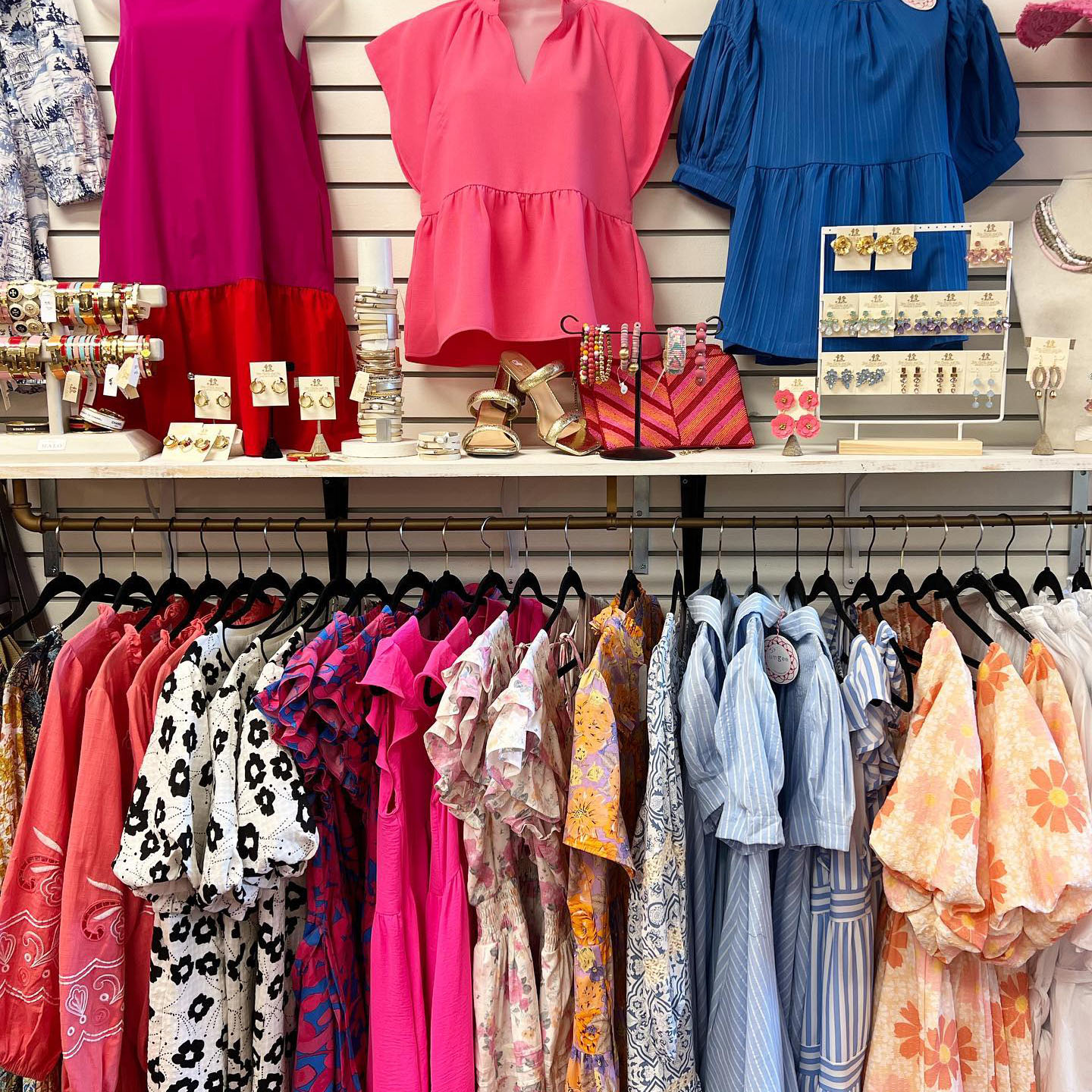Check Out the current Trends in Boutique Fashion for each Season
Exploring the Development and Impact of Garments on Modern Style Trends
The evolution of garments has dramatically affected modern fashion trends, merging historical criteria with sophisticated technologies. Iconic figures like Coco Chanel and Yves Saint Laurent transformed the style market by introducing concepts that prioritize comfort and access, which continue to resonate today.
Historical Style Influencers
In the tapestry of style history, certain numbers have actually left an enduring mark, shaping the fads and styles that specify entire ages. Coco Chanel, a revolutionary developer, redefined women's style by presenting comfy, classy clothing that left from restrictive bodices.
Elsa Schiaparelli is another essential number, renowned for her avant-garde layouts that included surrealist art, teaming up with Salvador Dalí to create wayward pieces that tested standard visual appeals. Her ingenious use shade and vibrant patterns reverberates in contemporary fashion. Yves Saint Laurent, at the same time, democratized high fashion with prêt-à-porter collections, bringing path styles to the masses and establishing a criterion for modern ready-to-wear lines.
These dreamers, amongst others, not only revolutionized style in their times but additionally set enduring patterns that reverberate in today's fashion business, providing a foundation whereupon modern-day designers remain to construct and introduce. Their traditions highlight the relevance of creative thinking and bold in vogue's ever-evolving narrative.
Technical Advancements in vogue
Among the vibrant landscape of the apparel industry, technological improvements stand at the forefront of advancement, improving how developers produce and consumers engage with fashion. The combination of 3D printing has changed style procedures, making it possible for developers to experiment with complex frameworks and sustainable products that were formerly impossible. This innovation promotes rapid prototyping, lowering waste and expediting production times.

Smart textiles, installing technology into textiles, are additionally transforming the sector. Technologies like self-cleaning and temperature-regulating materials provide improved performance and comfort. Wearable technology, incorporating attributes like health and fitness tracking and interaction, adds a brand-new measurement to style, merging visual appeals with functionality.
Cultural Shifts and Style
As technological improvements remain to reshape the style sector, cultural changes are similarly prominent, redefining style and customer preferences. In recent years, the rise of social networks platforms has accelerated the circulation of worldwide fashion patterns, allowing diverse social influences to assemble and exist side-by-side. This electronic interconnectivity has helped with the rapid exchange of concepts, causing an extra diverse and inclusive interpretation of style that mirrors the diverse nature of modern-day society.
Cultural recognition and admiration have actually triggered developers to draw ideas from a more comprehensive range of historic and ethnic contexts, integrating conventional concepts with modern visual appeals. This combination has led to style that reverberates with a broader target market, promoting a sense of identity and belonging throughout different demographics. In addition, the increasing need for personalization has driven brands to provide adjustable alternatives, allowing consumers to express uniqueness while showing their social heritage.
Furthermore, shifting societal values have actually influenced fashion, with inclusivity and variety coming to be central styles. The market has actually Home Page started to accept versions and influencers of numerous body types, ethnicities, and gender identifications, difficult standard appeal requirements. This improvement underscores the power of cultural shifts in forming the future of fashion, as style becomes a more authentic expression of cumulative and personal identification.
Sustainability and Modern Style
While the fashion market continues to evolve, the important for sustainability has actually become increasingly immediate, influencing modern layout methods. The increase of sluggish fashion, which highlights quality over amount, encourages customers read the article to invest in ageless pieces rather than transient fads.
Moreover, modern-day style is defined by its innovation in minimizing waste and advertising circularity. This technique not just mitigates environmental influence but additionally enhances the social obligation of style residences.

Future Trends in Style

Sustainability will certainly continue to be a driving force in address shaping future fashion patterns. The sector is progressively taking on eco-friendly materials and ethical production methods, replying to a growing customer need for liable practices. Technologies such as bio-fabricated materials and closed-loop recycling systems are established to redefine how apparel is produced and consumed, reducing environmental influence while maintaining design and high quality.
Cultural shifts, including the rise of inclusivity and variety, will also play a crucial function. As society comes to be a lot more knowledgeable about social problems, fashion is expected to end up being a platform for expression and adjustment. Designers will likely concentrate on developing collections that show a broader variety of experiences and identities, championing representation and access.
Verdict
The development of clothes considerably influences modern-day style trends, where historic impacts combine with modern designs. Key numbers like Coco Chanel and Yves Saint Laurent have actually redefined design, while technical innovations such as 3D printing and wise textiles broaden innovative opportunities. Social changes towards inclusivity and sustainability force brand names to embrace honest methods and accept diversity. This ongoing evolution underscores fashion's role as a mirror to societal values and technical advancement, recommending a future abundant with technology and inclusivity.
The evolution of apparel has dramatically influenced contemporary style fads, combining historical criteria with innovative developments.In the middle of the vibrant landscape of the style market, technical improvements stand at the leading edge of innovation, improving exactly how designers produce and customers involve with style.While the style sector proceeds to evolve, the imperative for sustainability has come to be significantly urgent, influencing contemporary style practices. As sustainability comes to be ingrained in modern-day style, it paves the way for a more responsible and aware fashion industry.
The advancement of garments significantly influences modern fashion trends, where historic impacts merge with modern layouts.